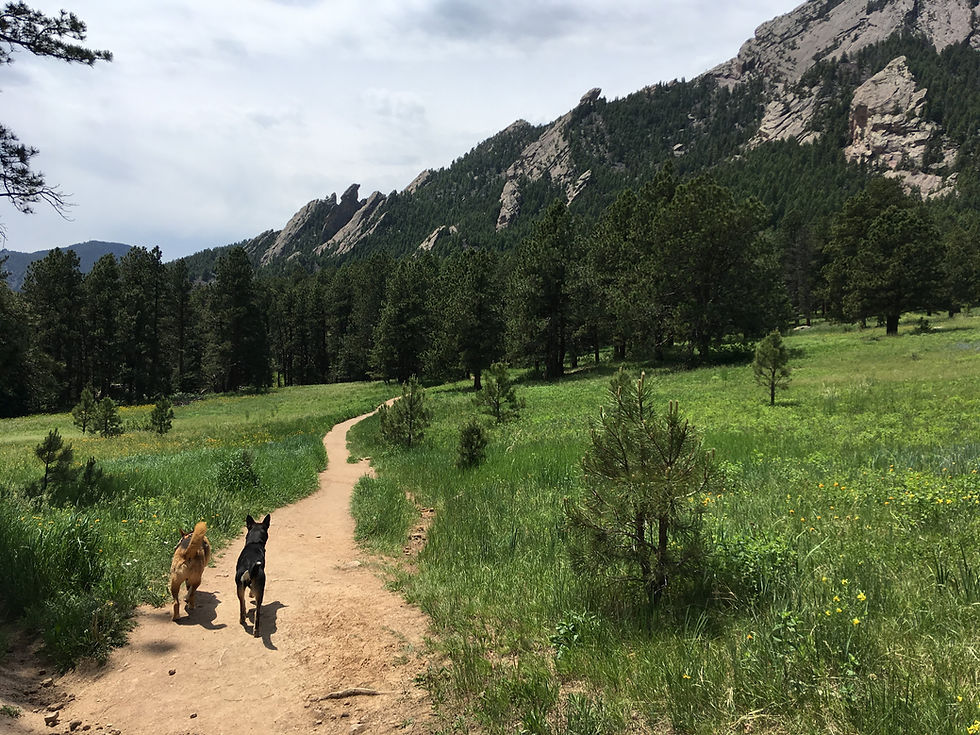How to Stop Your Dog from Pulling on the Leash
- Christine Booth

- Jan 27
- 3 min read
Leash pulling is one of the most common frustrations for dog owners, but here’s the thing: Why does your dog pull on the leash? Because you put one on them! Walking on a leash isn’t natural for dogs, and learning to walk calmly with you takes understanding, dedication, and flexibility. Here’s how to improve your dog’s leash manners while making walks enjoyable for both of you.

1. Follow Your Dog’s Lead
When we put a leash on our dog, it’s tempting to make the walk all about our agenda—getting from Point A to Point B. But for your dog, a walk is about exploring their world. Instead of dictating the pace or direction, let your dog take the lead. If they want to sniff a tree for five minutes, stop and let them sniff. Then follow them to the next spot that catches their interest.
This approach not only reduces pulling but also shows your dog that you value their needs, strengthening trust between you.
2. Meet Their Needs Before the Walk
A dog’s behavior on a walk is often influenced by how they’re feeling. If your dog is anxious, bored, or hungry, they’re more likely to pull or act out. Before heading out, ask yourself:
Have they had enough mental or physical stimulation today?
Are they feeling calm and relaxed?
Have they eaten or had water recently?
Have I had enough of these things today?
Addressing these needs before the walk sets both you and your dog up for success.
3. Use a Longer Leash
In areas where it’s safe, swap your short leash for a longer one. A longer leash gives your dog more freedom to explore, run, and just be a dog. It allows them to burn off energy while still being safely connected to you. Remember, your dog doesn’t need to walk at your side or behind you to know you’re the leader. Leadership is about trust and guidance, not control.
4. Make Walks Fun
Walking shouldn’t feel like a chore for your dog, or you! Instead of focusing solely on getting your dog to walk “correctly,” embrace their curiosity and let you both enjoy the experience.
When your dog stops to sniff, look around and find something beautiful about being outside. Are the birds singing? Is the sun shining on your face? Are there flowers blooming? Encourage sniffing, running, and exploring because the more enjoyable you make the walk for your dog, the more they will want to stay connected to you.
Why Leadership and Trust Matter
At the heart of good leash manners is the bond between you and your dog. Trust-based leadership doesn’t rely on strict rules or dominance. Instead, it’s about meeting your dog’s needs, communicating clearly, and showing them you’re a partner they can rely on. When your dog trusts you, they’ll naturally want to walk with you—leash or no leash.
Ready to Transform Your Walks?
Struggling with leash pulling? Our programs can help you build the trust and leadership skills needed for calm, enjoyable walks. Start your journey with our Pack Transformation Program or check out our book, The Hidden Habits of Highly Successful Pack Leaders, for more insights and strategies.
Walking your dog doesn’t have to be a tug-of-war. With patience, understanding, and a few adjustments, you can turn every walk into a bonding experience you both look forward to.




Comments